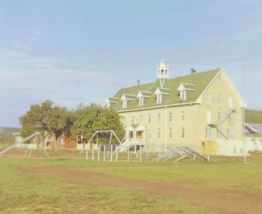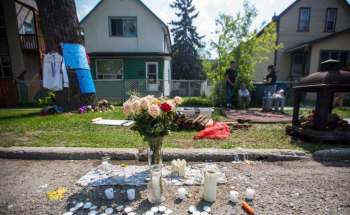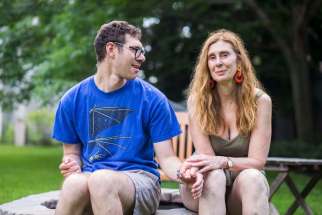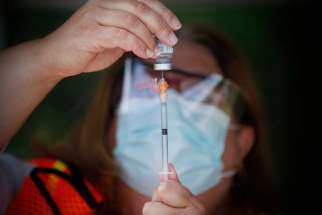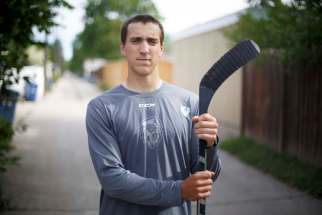Manitoba children attended Sask. residential school where unmarked graves found
Read this article for free:
or
Already have an account? Log in here »
To continue reading, please subscribe:
Monthly Digital Subscription
$0 for the first 4 weeks*
- Enjoy unlimited reading on winnipegfreepress.com
- Read the E-Edition, our digital replica newspaper
- Access News Break, our award-winning app
- Play interactive puzzles
*No charge for 4 weeks then price increases to the regular rate of $19.00 plus GST every four weeks. Offer available to new and qualified returning subscribers only. Cancel any time.
Monthly Digital Subscription
$4.75/week*
- Enjoy unlimited reading on winnipegfreepress.com
- Read the E-Edition, our digital replica newspaper
- Access News Break, our award-winning app
- Play interactive puzzles
*Billed as $19 plus GST every four weeks. Cancel any time.
To continue reading, please subscribe:
Add Free Press access to your Brandon Sun subscription for only an additional
$1 for the first 4 weeks*
*Your next subscription payment will increase by $1.00 and you will be charged $16.99 plus GST for four weeks. After four weeks, your payment will increase to $23.99 plus GST every four weeks.
Read unlimited articles for free today:
or
Already have an account? Log in here »
Hey there, time traveller!
This article was published 24/06/2021 (1629 days ago), so information in it may no longer be current.
OTTAWA — Manitoba children are likely buried among the potential 751 unmarked graves identified at a former Saskatchewan residential school this week, as the country braces for more burial sites to be uncovered.
“We are not asking for pity, but we are asking for understanding,” Cowessess Chief Cadmus Delorme said Thursday, as he revealed that a ground-radar search had found evidence of hundreds of Indigenous children buried in unmarked graves.
“We need time to heal, and this country must stand by us.”
Caravan of Winnipeg survivors heads west
Three Winnipeg residential school survivors will lead a delegation that’s driving to Brandon, Cowessess, Sask., and Kamloops, B.C., to commemorate Indigenous children who died away from their homes.
“We want to share our condolences and we want to bring our love,” said Gerry Shingoose, who survived nine years at the Muscowequan school in Saskatchewan.
“When we were in the schools, all we got was hate.”
Three Winnipeg residential school survivors will lead a delegation that’s driving to Brandon, Cowessess, Sask., and Kamloops, B.C., to commemorate Indigenous children who died away from their homes.
“We want to share our condolences and we want to bring our love,” said Gerry Shingoose, who survived nine years at the Muscowequan school in Saskatchewan.
“When we were in the schools, all we got was hate.”
On Monday, Shingoose will leave Winnipeg alongside survivors Viv Ketchum and Chickadee Richard on a 1,950-kilometre journey to the former residential school at Tk’emlúps te Secwe̓pemc First Nation in B.C.
On July 2, they’ll deliver gifts, including the ashes from the sacred fire that was lit at the Manitoba legislature after the news of the Kamloops burial site, as well as local symbols such as flags, a Métis sash and four sacred medicines.
The group added Brandon to its list after First Nations shared research showing there are 104 suspected unmarked graves at a former residential school site. On Thursday, they decided to add Cowessess to the tour.
Shingoose wants people to know that survivors have traumatic memories dredged up each time they hear about a new burial site.
“To hear the number, 751, I broke down and all the memories just came pouring in,” she said.
The best thing that could come of that is for the public to realize the reality of what happened at residential schools, Shingoose said.
She encourages Manitobans to follow along through Facebook livestreams, all of which can be accessed at: http://wfp.to/7Fe
—Dylan Robertson
Manitoba bands are researching whether their ancestors are buried at the site. They have demanded that the Catholic Church hand over records.
Known as the Marieval or Grayson school, the site is on Cowessess territory, 80 kilometres west of the Manitoba border. Delorme said children from across southwestern Manitoba were sent there.
“I have been advised from oral stories from survivors that (children from) some southwestern areas of Manitoba did go to Marieval,” he said.
Delorme said children whose Manitoba reserves were administered by Catholic priests, or Indian agents who were Catholic, were often sent to Cowessess. Similarly, kids from Saskatchewan reserves administered by Protestants were often sent to the school in Birtle, Man.
His band commissioned experts to survey a part of the grounds where children were known to be buried, sometimes by their own classmates. The experts found 751 markings that would suggest a burial site with about 90 per cent accuracy, meaning there are more than 600 graves.
The chief said other sites likely contain graves because children who weren’t baptized Catholic wouldn’t be buried in the main gravesite.
Grand Chief Jerry Daniels, who represents Manitoba’s southern First Nations, said families need time to grieve, but won’t heal until they know whether their relatives are among those buried in faraway places.
“We don’t know where our family members went,” said Daniels.
He said Manitoba children were sent to schools across Saskatchewan, based on what was convenient for the churches and the government.
“We’re in the process of stitching together that story, of what exactly happened in southern Manitoba.”
He joined leaders at Cowessess in calling for records from the Catholic Church, including the Oblates who ran the Marieval school until the early 1970s.
Delorme told reporters that Catholics who ran the school removed grave markers. Don Bolen, the archbishop of Regina, seemed to acknowledge one of those incidents. In a written apology Thursday, he noted how “one priest who served in the region in the 1960s destroyed headstones in a way which was reprehensible.”
Delorme also claimed that in the early 1970s, the Oblates transferred almost all Cowessess records to an office in Winnipeg.
The head of the religious order said he couldn’t confirm those accounts but has asked his archival staff to look into them.
Rev. Ken Thorson said he’ll provide as much clarity as possible to Indigenous families in Manitoba and across the country.
“All of the energy we can spare, and more, is being focused on ensuring the records are made accessible. We’re trying to comply and we’re trying to help people to have access to their history,” said Thorson, who leads the Lacombe branch of the Missionary Oblates of Mary Immaculate.
That branch holds the records for all residential schools run by the Oblates across the Prairies.
“We’re facing our history (and) our complicity with the colonial system, and residential schools are an integral part of that system,” Thorson said from Mississauga, Ont.
According to the Truth and Reconciliation Commission report in 2015, there was at least one dormitory fire at Marieval that was believed to be deliberately set. Many of the children ran away.
The youngest survivor to testify at the commission went to the Cowessess school. Amber Pelletier testified that school officials cut her hair and assigned her a number in 1993.
“We could tell when the keepers were mad, because they would use our number to call us or talk to us,” said Pelletier, who attended the school until it closed in 1997.
“We could tell when the keepers were mad, because they would use our number to call us or talk to us.” – Amber Pelletier, the youngest survivor to testifiy at the TRC
In Winnipeg Thursday, flags at city-run buildings were lowered to half-mast.
“Given what we know about residential schools, these two recent discoveries shouldn’t surprise anyone in Canada, but that doesn’t take away from the horror of finding them,” Mayor Brian Bowman said.
“It’s so vitally important that action towards reconciliation is a result of these discoveries.”
The Winnipeg sign at The Forks will be lit orange and dimmed for four days “in harmony with the four levels of the spirit world in Anishinaabe tradition,” Bowman said.
Premier Brian Pallister said Manitobans shouldn’t shy away from the history of residential schools.
“We have to dedicate ourselves to reconciliation,” he said.
.jpg?w=1000)
The NDP and Liberals both argued the public needs to press for better policies for Indigenous people, and accountability on residential schools.
“All of us in this country today are the inheritants of that legacy,” said NDP Leader Wab Kinew.
The National Centre for Truth and Reconciliation, based at the University of Manitoba, urged governments to provide better healing supports to survivors of residential schools, and let the organization complete its register of children who never returned home.
“The least governments and churches must do now is to provide access to the necessary records to identify the locations of all the children and allow communities to honour them with the traditional ceremonies and protocols they were denied,” wrote Stephanie Scott, director of operations.
Grand Chief Arlen Dumas of the Assembly of Manitoba Chiefs warned that the number of unmarked graves is expected to increase as more bands conduct ground-radar searches.
“Those numbers are our people. They were our children, our loved ones, our ancestors,” Dumas wrote.
“The survivors have always told the stories; it just took this long for the world to listen.”
— With files from Carol Sanders and Joyanne Pursaga
dylan.robertson@freepress.mb.ca
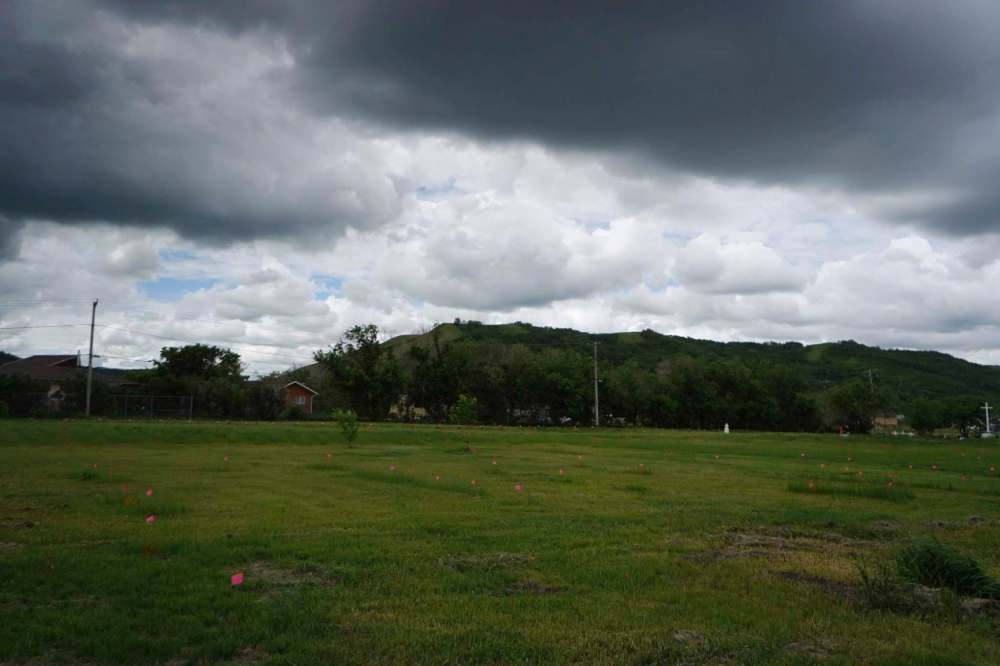
History
Updated on Thursday, June 24, 2021 8:07 PM CDT: Adds "potential" to lede graf.









